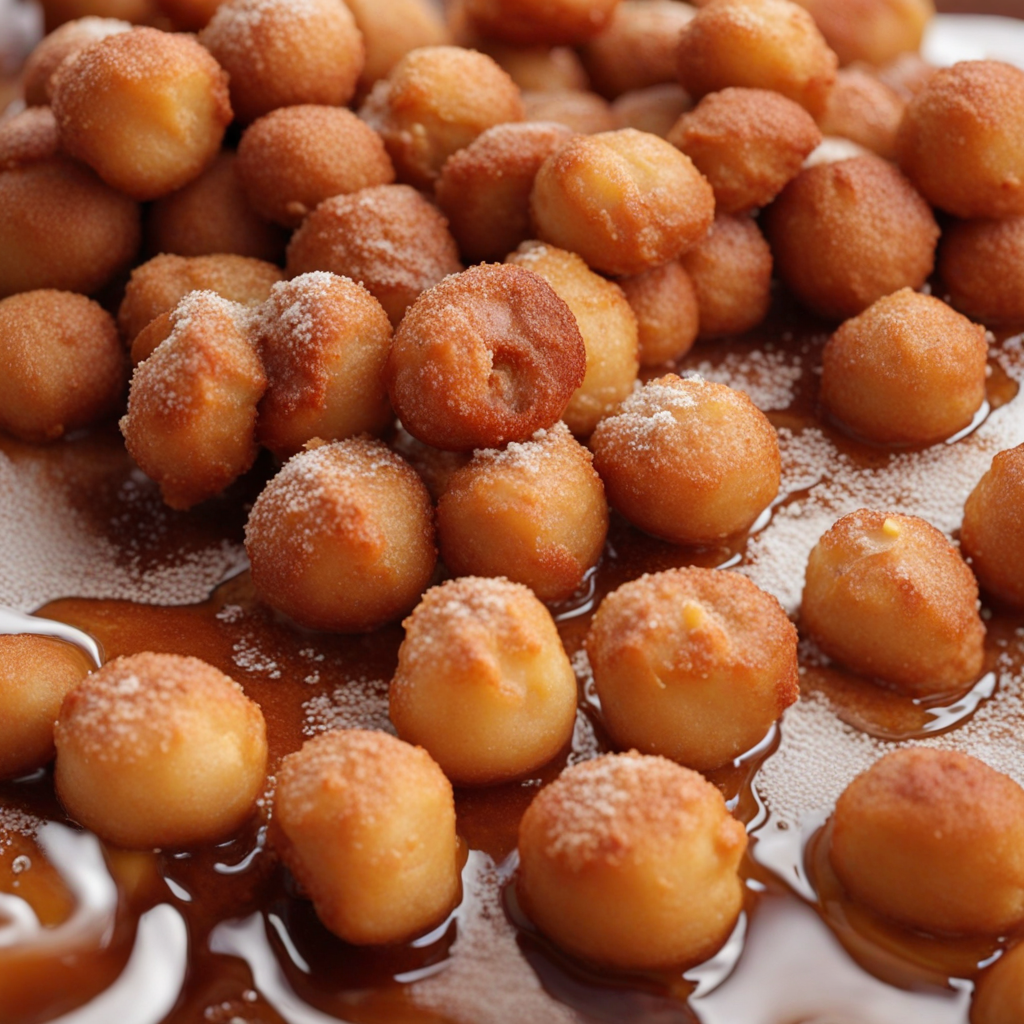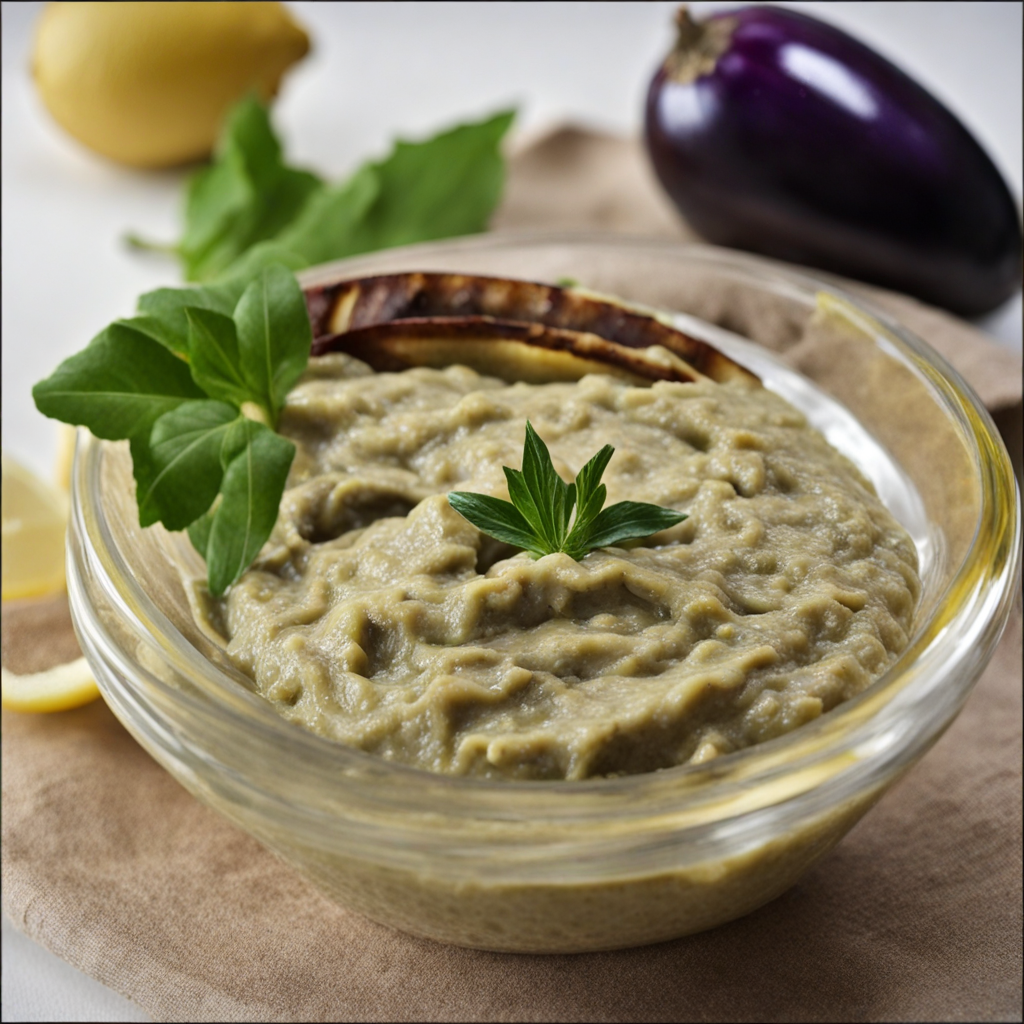Loukoumades
Loukoumades are delightful Greek pastries that are sure to captivate anyone's taste buds. These fluffy, golden-brown dough balls are made from a simple yeast-based dough that is deep-fried until perfectly crisp on the outside while remaining soft and airy on the inside. The dough is light and slightly sweet, making it an ideal canvas for a variety of toppings and flavors. Traditionally, loukoumades are served warm, allowing their delightful textures to shine through with each bite, creating a comforting and indulgent experience. Once fried, loukoumades are generously drizzled with honey syrup, which adds a luscious sweetness that complements the subtle flavors of the dough. The honey syrup often includes a hint of cinnamon or sometimes even a splash of orange blossom water, infusing the pastries with aromatic notes that elevate their taste. Sprinkled with crushed walnuts or sesame seeds, these toppings not only add a crunchy texture but also introduce a nutty flavor that balances the sweetness, making each mouthful a harmonious blend of sensations. Loukoumades are often enjoyed as a dessert or a sweet snack, making them a staple at festive gatherings and celebrations in Greece. Their charming appearance and delightful taste make them a favorite among locals and visitors alike. Whether served at a bustling street vendor or in a cozy café, loukoumades invite you to explore the rich culinary heritage of Greece, offering a taste that is both nostalgic and refreshingly unique.
How It Became This Dish
The Sweet Journey of Λουκουμάδες: A Greek Culinary Treasure #### Origins: The Ancient Roots Λουκουμάδες (loukoumades) are small, deep-fried dough balls, traditionally soaked in honey syrup and dusted with cinnamon and sesame seeds. Their history is as rich and layered as the flavors they embody, tracing back to the ancient Greeks. The term itself derives from the Arabic word "luqma," meaning "mouthful," and while these delightful treats are often associated primarily with Greek cuisine, their origins speak to a broader Mediterranean tradition of sweet fried dough. The first recorded mention of loukoumades dates back to the 5th century BCE in ancient Greece. They were referred to as "honey tokens" and were served to athletes during the ancient Olympic Games as a form of nourishment and celebration. These early versions were likely simpler than today’s rendition—made primarily from flour, water, and honey, symbolizing both sustenance and victory. As the Roman Empire expanded, so too did the culinary traditions of the Greeks, including the preparation of sweet fried desserts. The Romans had their own versions of fried dough treats, which likely influenced the evolution of loukoumades. By the Byzantine period, the recipe for these delectable morsels had diversified, incorporating more ingredients and flavors, marking the beginning of their transformation into the beloved dessert they are today. #### Cultural Significance: A Symbol of Festivity Throughout history, loukoumades have been more than just a dessert; they are a symbol of celebration and community. In Greece, these treats are often prepared during festive occasions, family gatherings, and religious celebrations. They hold a special place during the Greek Orthodox feast of Epiphany, where they are served to commemorate the baptism of Jesus and the arrival of the Holy Spirit. Traditionally, a plate of loukoumades is prepared, and the first serving is offered to the church, reinforcing the dessert's role as a communal offering. Loukoumades also play a significant role in Greek weddings and christenings. It is customary to present them to guests, symbolizing prosperity and sweetness in the couple’s new life together. Their round shape is often interpreted as a symbol of eternity, making them a fitting addition to any celebration of love and unity. #### Development Over Time: From Ancient Treat to Modern Delight As Greek society evolved, so too did the recipe and methods of preparing loukoumades. By the 15th century, with the fall of Constantinople and the rise of the Ottoman Empire, the dessert began to take on more diverse influences. The introduction of spices such as cinnamon and the use of different types of syrups transformed loukoumades from simple honey-soaked balls into a complex confection that could be personalized to suit various palates. In the 19th century, Greek immigrants began bringing loukoumades to different parts of the world, especially to the United States, where they became popular in Greek communities. The dessert began to adapt to local tastes, leading to variations such as the addition of chocolate, nuts, and even ice cream. This adaptability contributed to their growing popularity, allowing loukoumades to transcend cultural boundaries while retaining their Greek identity. In contemporary Greece, loukoumades are often enjoyed as street food and can be found at fairs, markets, and food stalls. Vendors serve them hot and fresh, drizzled with honey or syrup, and sometimes accompanied by a variety of toppings, including walnuts, pistachios, and even fruit. This modernization has reinvigorated the dessert, attracting a new generation of enthusiasts eager to savor this traditional treat. #### Variations and Contemporary Trends While the classic loukoumades are undeniably beloved, modern variations have emerged, showcasing the versatility of this traditional dessert. One popular twist is the incorporation of unique flavors, such as chocolate or matcha, appealing to contemporary tastes. Some chefs experiment with filling the dough balls with custard, cream, or even savory ingredients, pushing the boundaries of what loukoumades can be. In recent years, health-conscious adaptations have also gained traction. Some bakers are exploring gluten-free or vegan versions, using alternative ingredients without sacrificing flavor or texture. This evolution reflects a broader trend in the culinary world, where traditional dishes are reimagined to meet modern dietary preferences while honoring their historical roots. The rise of social media has also played a crucial role in the resurgence of loukoumades. Instagram-worthy presentations and creative toppings have made them a popular item for foodies and influencers, driving interest and demand. Festivals celebrating Greek culture often feature loukoumades as a highlight, showcasing their enduring appeal and cultural significance. #### Conclusion: A Sweet Legacy Loukoumades are more than just a dessert; they are a testament to the rich tapestry of Greek history and culture. From their ancient origins to their modern adaptations, these delightful treats embody the spirit of community, celebration, and culinary innovation. Each bite of a loukoumade carries with it centuries of tradition, a reminder of the interconnectedness of food and culture. As Greece continues to evolve, so too will loukoumades, adapting to new tastes and culinary trends. Yet, their essence—a symbol of joy and togetherness—will remain unchanged, ensuring that this sweet morsel will delight generations to come. Whether enjoyed at a festive gathering, as a street food treat, or as a modern twist in a trendy café, loukoumades will forever hold a special place in the hearts of those who savor them, a delicious link to the past and a sweet promise for the future.
You may like
Discover local flavors from Greece







